
OPERATION AND PARTS MANUAL
THIS MANUAL MUST ACCOMPANY THE EQUIPMENT AT ALL TIMES.
Revision #0 (07/10/08)
MODEL MS120H13
MECHANICAL DUMP
MODEL MS120HD13
HYDRAULIC DUMP
HYDRAULIC PLASTER/MORTAR MIXERS
(HONDA GX390 GASOLINE ENGINE)
To find the latest revision of this
publication, visit our website at:
www.stowmfg.com

PAGE 2 — MS120 HYDRAULIC MIXER • OPERATION AND PARTS MANUAL — REV. #0 (07/10/08)
Engine exhaust and some of
its constituents, and some dust created
of California to cause cancer, birth
defects and other reproductive harm.
by power sanding, sawing, grinding,
drillingandotherconstructionactivities
contains chemicals known to the State
Some examples of these chemicals are:
Leadfromlead-basedpaints.
Crystallinesilicafrombricks.
Cementandothermasonryproducts.
Arsenicandchromiumfromchemically
treatedlumber.
Your risk from these exposures varies,
dependingonhowoftenyoudothistype
of work. To reduce your exposure to
these chemicals: work in aALWAYS
well ventilated area, and work with
approved safety equipment, such as
dust masks that are specially designed
to filter out microscopic particles.
PROPOSITION 65 WARNING

MS120 HYDRAULIC MIXER • OPERATION AND PARTS MANUAL — REV. #0 (07/10/08) — PAGE 3
Grinding/cutting/drilling of masonry, concrete, metal and
other materials with silica in their composition may give
off dust or mists containing crystalline silica. Silica is a
basic component of sand, quartz, brick clay, granite and
numerous other minerals and rocks. Repeated and/or
substantial inhalation of airborne crystalline silica can
cause serious or fatal respiratory diseases, including
silicosis. In addition, California and some other
authorities have listed respirable crystalline silica as a
substance known to cause cancer. When cutting such
materials, always follow the respiratory precautions
mentioned above.
WARNING
Grinding/cutting/drilling of masonry, concrete, metal and
other materials can generate dust, mists and fumes
containing chemicals known to cause serious or fatal
injury or illness, such as respiratory disease, cancer,
birth defects or other reproductive harm. If you are
unfamiliar with the risks associated with the particular
process and/or material being cut or the composition of
the tool being used, review the material safety data
sheet and/or consult your employer, the material
manufacturer/supplier, governmental agencies such as
OSHA and NIOSH and other sources on hazardous
materials. California and some other authorities, for
instance, have published lists of substances known to
cause cancer, reproductive toxicity, or other harmful
effects.
Control dust, mist and fumes at the source where
possible. In this regard use good work practices and
follow the recommendations of the manufacturers or
suppliers, OSHA/NIOSH, and occupational and trade
associations. Water should be used for dust
suppression when wet cutting is feasible. When the
hazards from inhalation of dust, mists and fumes cannot
be eliminated, the operator and any bystanders should
always wear a respirator approved by NIOSH/MSHA for
the materials being used.
WARNING
SILICOSIS WARNING RESPIRATORY HAZARDS
SILICOSIS/RESPIRATORY WARNINGS

PAGE 4 — MS120 HYDRAULIC MIXER • OPERATION AND PARTS MANUAL — REV. #0 (07/10/08)
TABLE OF CONTENTS
Specifications and part numbers are
subject to change without notice.
In accordance with our established policy of
constant improvement, we reserve the right to
amend these specifications at any time without
notice.
MS120 Hydraulic Mixer
Proposition 65 Warning ........................................... 2
Silicosis/Respiratory Warnings ................................ 3
Table of Contents .................................................... 4
Parts Ordering Procedures ..................................... 5
Safety ................................................................... 6-7
Rules and Regulations ....................................... 8-10
Towing Guidelines ................................................. 11
Safety Chain Connection ...................................... 12
Specifications ........................................................ 13
Dimensions ........................................................... 14
General Information .............................................. 15
Mixer Components ........................................... 16-17
Hydraulic Components.......................................... 17
Engine Components ............................................. 18
Paddle Blade Adjustment ...................................... 19
Inspection ......................................................... 20-21
Initial Start-Up .................................................. 22-23
Operation ......................................................... 23-24
Shut-Down ............................................................ 25
Maintenance (Engine)...................................... 26-27
Maintenance (Mixer) ........................................ 28-31
Storage ................................................................. 31
Troubleshooting (Engine) ................................. 32-33
Troubleshooting (Mixer) ........................................ 34
Hydraulic System Diagram ................................... 35
Explanation of Code In Remarks Column............. 36
Suggested Spare Parts ......................................... 37
Component Drawings
Nameplate and Decals..................................... 38-39
Paddle Blades Assembly .................................. 40-41
Steel Drum Assembly (Manual) ....................... 42-43
Steel Drum Assembly (Hydraulic) .................... 44-45
Paddle Shaft Assembly .................................... 46-47
Hydraulic Assembly .......................................... 48-49
Frame Assembly .............................................. 50-51
Steel Engine Cover Assembly .......................... 52-53
Honda GX390K1QA2/
GX390U1QA2 Engine
Honda Engine Assembly .................................. 54-55
Air Cleaner Assembly....................................... 56-57
Camshaft Assembly ......................................... 58-59
Piston Assembly ............................................... 60-61
Crankcase Cover Assembly ............................. 62-63
Crankshaft Assembly ....................................... 64-65
Cylinder Barrel Assembly ................................. 66-67
Cylinder Head Assembly .................................. 68-69
Fan Cover Assembly ........................................ 70-71
Flywheel Assembly .......................................... 72-73
Ignition Coil Assembly ...................................... 74-75
Carburetor Assembly ....................................... 76-77
Muffler Assembly ............................................. 78-79
Recoil Starter Assembly................................... 80-81
Control Assembly ............................................. 82-83
Fuel Tank Assembly ......................................... 84-85
Gasket Kit Assembly ........................................ 86-87
Labels Assembly .............................................. 88-89
Terms and Conditions of Sale — Parts ................. 90

MS120 HYDRAULIC MIXER • OPERATION AND PARTS MANUAL — REV. #0 (07/10/08) — PAGE 5
PARTS ORDERING PROCEDURES
Ordering parts has never been easier!
Choose from three easy options:
WE ACCEPT ALL MAJOR CREDIT CARDS!
When ordering parts, please supply:
❒❒
❒❒
❒
Dealer Account Number
❒❒
❒❒
❒
Dealer Name and Address
❒❒
❒❒
❒
Shipping Address (if different than billing address)
❒❒
❒❒
❒
Return Fax Number
❒❒
❒❒
❒
Applicable Model Number
❒❒
❒❒
❒
Quantity, Part Number and Description of Each Part
❒❒
❒❒
❒
Specify Preferred Method of Shipment:
✓
UPS/Fed Ex
✓ DHL
■
Priority One
✓
Truck
■
Ground
■ Next Day
■
Second/Third Day
All orders are treated as
Standard Orders
and will ship the same day if received prior
to 3PM PST.
If you have an MQ Account, to obtain a
Username and Password, E-mail us at:
To obtain an MQ Account, contact your
District Sales Manager for more information.
Order via Internet (Dealers Only):
Order parts on-line using Multiquip’s SmartEquip website!
■
View Parts Diagrams
■
Order Parts
■
Print Specification Information
Note: Discounts Are Subject To Change
Goto www.multiquip.com and click on
Order Parts
to log in and save!
Use the
internet
and qualify for a 5% Discount
on
Standard orders
for all orders which include
complete part numbers.*
Order via Fax (Dealers Only):
All customers are welcome to order parts via Fax.
Domestic (US) Customers dial:
1-800-6-PARTS-7 (800-672-7877)
Fax
your order in and qualify for a 2% Discount
on
Standard orders
for all orders which include
complete part numbers.*
Order via Phone:
Domestic (US) Dealers Call:
1-800-427-1244
International Customers
should contact
their local Multiquip Representatives for
Parts Ordering information.
Non-Dealer Customers:
Contact your local Multiquip Dealer for
parts or call 800-427-1244 for help in
locating a dealer near you.
Note: Discounts Are Subject To Change
Effective:
January 1
st
, 2006

PAGE 6 — MS120 HYDRAULIC MIXER • OPERATION AND PARTS MANUAL — REV. #0 (07/10/08)
FOR YOUR SAFETY AND SAFETY OF OTHERS!
Safety precautions should be followed at all
times when operating this equipment. Failure
to read and understand the Safety Messages
and Operating Instructions could result in injury
to yourself and others.
This manual has been developed to
provide complete instructions for the
safe and efficient operation of this
equipment. Refer to the engine
manufacturer's instructions for data
relative to its safe operation.
Before using this equipment ensure that the operating
individual has read and understood all instructions in this
manual.
SAFETY MESSAGE ALERT SYMBOLS
The three Safety Messages shown below will inform you
about potential hazards that could injure you or others. The
Safety Messages specifically address the level of exposure
to the operator, and are preceded by one of three words:
DANGER, WARNING, or CAUTION.
HAZARD SYMBOLS
Potential hazards associated with the operation of this
equipment will be referenced with Hazard Symbols which
appear throughout this manual, and will be referenced in
conjunction with Safety Message Alert Symbols.
SAFETY
WARNING — Lethal Exhaust Gas Hazards
Engine fuel exhaust gases contain poisonous
carbon monoxide. This gas is colorless and
odorless, and can cause death if inhaled.
NEVER operate this equipment in a confined
area or enclosed structure that does not
provide ample free flow air.
WARNING — Explosive Fuel Hazards
Fuel is extremely flammable and its
vapors can cause an explosion if ignited.
DO NOT start the engine near spilled fuel
or combustible fluids.
DO NOT fill the fuel tank while the engine
is running or hot. DO NOT overfill tank, since spilled
fuel could ignite if it comes into contact with hot engine
parts or sparks from the ignition system. Store fuel in
approved containers, in well-ventilated areas and away
from sparks and flames.
WARNING — Burn Hazards
Engine components can generate extreme
heat. To prevent burns, DO NOT touch
these areas while the engine is running or
immediately after operation. Never operate
the engine with heat shields or heat guards
removed.
WARNING — Respiratory Hazards
ALWAYS wear approved respiratory
protection when required.
WARNING
You CAN be KILLED or
SERIOUSLY INJURED
if you
DO NOT follow these directions.
CAUTION
You CAN be
INJURED
if you DO NOT follow these
directions.
DANGER
You WILL be
KILLED
or
SERIOUSLY INJURED
if you
DO NOT follow these directions.

MS120 HYDRAULIC MIXER • OPERATION AND PARTS MANUAL — REV. #0 (07/10/08) — PAGE 7
SAFETY
CAUTION — Eye and Hearing Hazards
ALWAYS wear approved eye and hearing
protection.
CAUTION — Rotating Parts Hazards
NEVER operate equipment with covers or
guards removed. Keep fingers, hands, hair
and clothing away from all moving parts
to prevent injury.
CAUTION — Start/Stop Switch
ALWAYS
test the start/stop switch for the gasoline
engine every time the engine is started.
WARNING — Stand Clear of Mixer
Always stand clear of the dump handle when the mixer
is in operation. Any binding of material between the mixer
blades and the drum will cause the drum handle to
quickly move and could cause bodily harm.
CAUTION — Accidental Starting Hazards
ALWAYS place the equipment ON/OFF
switch in the OFF position when the
equipment is not in use.
CAUTION — Equipment Damage Hazards
Other important messages are provided throughout this
manual to help prevent damage to your equipment, other
property, or the surrounding environment.
CAUTION — Overspeed Conditions
NEVER tamper with the factory setting of
the engine governor. Personal injury and
equipment damage can result if operating
in speed ranges above the maximum
allowable.

PAGE 8 — MS120 HYDRAULIC MIXER • OPERATION AND PARTS MANUAL — REV. #0 (07/10/08)
RULES AND REGULATIONS
NEVER touch the hot exhaust manifold,
muffler or cylinder. Allow these parts to cool
before servicing engine or pump.
ALWAYS allow the engine to cool before
adding fuel or performing service and maintenance
functions. Contact with
hot
components can cause
serious burns.
NEVER operate this equipment in any enclosed or narrow
area where free flow of the air is restricted. The engine
of this equipment requires an adequate free flow of
cooling air. If the air flow is
restricted it will cause serious
damage to the equipment or
engine and may cause injury
to people and property.
Remember the engine gives
off DEADLY gases.
ALWAYS refuel in a well-ventilated area, away from
sparks and open flames.
ALWAYS use extreme caution when working with
flammable liquids. When refueling, stop the engine and
allow it to cool.
DO NOT smoke around or near the
equipment. Fire or explosion could result
from fuel vapors, or if fuel is spilled on a
hot engine.
NEVER operate the equipment in an
explosive atmosphere or near combustible
materials. An explosion or fire could result
causing severe
bodily harm or even
death.
DO NOT top-off fuel tank. Topping-off is dangerous as it
causes fuel to spill.
ALWAYS store the equipment in a clean, dry location
out of the reach of children.
NEVER run engine without air cleaner or air filter. Severe
engine damage may occur.
NEVER leave the equipment unattended with the engine
running. Turn off engine when unattended.
CAUTION must always be observed while servicing this
equipment. Rotating parts can cause injury if contacted.
GENERAL SAFETY
DO NOT operate or service this equipment
before reading this entire manual.
This equipment should not be operated by
persons under 18 years of age.
NEVER operate this equipment without proper protective
clothing, shatterproof glasses, steel-toed boots and other
protective devices required by the job.
NEVER operate this equipment when not
feeling well due to fatigue, illness or when
under medication.
NEVER operate this equipment under the
influence of drugs or alcohol.
NEVER disconnect any
"emergency or safety
devices"
. These devices are intended for operator safety.
Disconnection of these devices can cause severe injury,
bodily harm or even death! Disconnection of any of these
devices will void all warranties.
NEVER use accessories or attachments that are not
recommended by Stow for this equipment. Damage to
the equipment and/or injury to user may result.
Manufacturer does not assume responsibility for any
accident due to equipment modifications. Unauthorized
equipment modification will void all warranties.
Whenever necessary, replace nameplate, operation and
safety decals when they become difficult read.
ALWAYS check the equipment for loosened threads or
bolts before starting.
WARNING — Read This Manual
Failure to follow instructions in this manual may lead to
serious injury or even
DEATH
! This equipment is to be
operated by trained and qualified personnel only! This
equipment is for industrial use only.

MS120 HYDRAULIC MIXER • OPERATION AND PARTS MANUAL — REV. #0 (07/10/08) — PAGE 9
RULES AND REGULATIONS
When towing, an adequate safety chain must be
fastened to the frame. See Towing Guidelines section in
this manual.
Keep all
inexperienced
and
unauthorized
people away
from the equipment at all times.
Unauthorized equipment modifications will void all
warranties.
Check all fasteners periodically for tightness. Also check
towing tongue bolt, lock nut and wheel lug nuts for wear.
Stop the engine and disconnect the spark plug before
allowing anybody’s hands in the mixing drum.
NEVER pour or spray water over the engine.
When towing, an adequate safety chain must be
fastened to the frame. See Towing Guidelines section in
this manual.
Keep all
inexperienced
and
unauthorized
people away
from the equipment at all times.
Unauthorized equipment modifications will void all
warranties.
Check all fasteners periodically for tightness. Also check
towing tongue bolt, lock nut and wheel lug nuts for wear.
Stop the engine and disconnect the spark plug before
allowing anybody’s hands in the mixing drum.
NEVER pour or spray water over the engine.
Depending on type of mixer, test the
ON/OFF
switch for
the gasoline enginebefore operating. The purpose of these
switches is to shut down the engine or motor of the mixer
ALWAYS stand clear of the release drum lock. Move
handle downward to empty the drum. Move handle upward
to return to vertical position. Inspect for proper
functionality before starting engine or engaging blades.
Any binding of material between the mixing blades &
drum will cause the handle to quickly rotate if not in the
"up & locked" position.
DO NOT operate this equipment unless all guards and
safety devices are attached and in place.
Refer to the
HONDA Engine Owner's Manual
for engine
technical questions or information recommended by Stow
for this equipment. Damage to the equipment and/or injury
to user may result.
TRANSPORTING
ALWAYS shutdown engine before transporting.
Tighten fuel tank cap securely and close fuel cock to
prevent fuel from spilling.
Drain fuel when transporting equipment over long
distances or bad roads.
MAINTENANCE SAFETY
NEVER lubricate components or attempt service on a
running machine.
ALWAYS allow the machine a proper amount of time to
cool before servicing.
Keep the equipment in proper running condition.
Fix damage to the equipment immediately and always
replace broken parts.
Dispose of hazardous waste properly. Examples of
potentially hazardous waste are used motor oil, fuel and
fuel filters.
DO NOT use food or plastic containers to dispose of
hazardous waste.
DO NOT pour waste, oil or fuel directly onto the ground,
down a drain or into any water source.
WARNING — Manual Dump Drum Handle
Always stand clear of dump handle when equipment is in
operation.

PAGE 10 — MS120 HYDRAULIC MIXER • OPERATION AND PARTS MANUAL — REV. #0 (07/10/08)
EMERGENCIES
ALWAYS know the location of the nearest
fire extinguisher
.
ALWAYS know the location of the nearest
first aid kit
.
In emergencies,
always
know the location
of the nearest phone or
keep a phone on the job site
.
Also know the phone numbers of the nearest
ambulance
,
doctor
and
fire department
. This
information will be invaluable in case of emergency.
RULES AND REGULATIONS

MS120 HYDRAULIC MIXER • OPERATION AND PARTS MANUAL — REV. #0 (07/10/08) — PAGE 11
TOWING GUIDELINES
TOWING SAFETY PRECAUTIONS
The following list of suggestions should be used when towing
the mixer:
Check with your county or state safety towing regulations
department before towing your
mixer
.
Make sure that the hitch and coupling of the towing
vehicle are rated equal to, or greater than the trailer "gross
vehicle weight rating" (GVWR).
ALWAYS inspect the hitch and coupling for wear. NEVER
tow the mixer with defective hitches, couplings, chains
etc.
CHECK the tire air pressure on both the towing vehicle
and the trailer. Also check the tire tread wear on both
vehicles.
ALWAYS make sure the mixer is equipped with a “Safety
Chain.”
ALWAYS attach trailer's safety chain to the frame of
towing vehicle.
ALWAYS make sure that the towing vehicle's directional,
backup, and brake lights are working properly.
Remember in most cases the maximum speed unless
otherwise posted for highway towing is 55 MPH, however
before towing your mixer, check your local state, and
county vehicle towing requirements. Recommended off-
road towing is not to exceed 10 or 15 MPH or less
depending on type of terrain.
Place
chocked blocks
underneath wheels to prevent
rolling,
while parked, if disconnected from towing
vehicle.
Inflate tires to correct pressure, inspect tires for cuts, and
excessive wear. See Table 9 (Tire Wear Troubleshooting).
When towing of the mixer is required, place the drum in the
up position (mouth facing upwards) and lock the drum latch.
ALWAYS make sure that the fuel valve lever is in the
OFF position (gasoline models only).
Check wheel mounting lug nuts with a torque wrench.
Torque wheel lug nuts as described in the maintenance
section of this manual.
Check tightness of U-clamp nuts, torque suspension
hardware as referenced in the maintenance section of this
manual.
Avoid sudden stops and starts. This can cause skidding,
or jackknifing. Smooth, gradual starts and stops will
improve gas milage.
Avoid sharp turns to prevent rolling.
Tow bar to vehichle connection (Coupler only)
1. Check the vehicle hitch ball, and mixer's coupler for
signs of wear or damage. Replace any parts that are
worn or damaged before towing.
2. Use only a 2-inch ball diameter (towing vehicle), this will
match the mixer's 2-inch coupler. Use of any other ball
diameter will create an extremely dangerous condition which
can result in separation of the coupler and ball or ball
failure.
3. After tow bar has been connected to mixer (see next page),
attach mixer's coupler to the hitch ball on the towing vehicle
securely and make sure the lock lever is in the down
position (locked).
Mixer Tow Bar Vehicle Connection (Pentle and Loop)
1. Make sure the bumper on the towing vehicle is equipped
to handle either a pintle or loop type tow bar configuration.
2. After tow bar has been connected to mixer (see next page),
secure either type of tow bar to the towing vehicle, following
state and county towing regulations.
3. As a minimum, use a 1/2-inch bolt and nylock nut grade 5
when securing the tow bar to the towing vehicle and to
the unit being towed.
CAUTION — Replacing Towing Components
If the mixer tow bar is deformed or damaged, replace
the
entire
tow bar. NEVER tow the mixer with a defective
tow bar. There exists the possibility of the mixer
separating from the towing vehicle.
CAUTION — Inspect Towing Components
To reduce the possibility of an accident while transporting
the machine on public roads, always make sure that the
equipment’s towing components and the towing vehicle
are in good operating condition and both units are
mechanically sound. Remember before towing,
check with
local and state laws for proper compliance.

PAGE 12 — MS120 HYDRAULIC MIXER • OPERATION AND PARTS MANUAL — REV. #0 (07/10/08)
Reference Figure 1 for the installation of the
safety chain
.
TOW BAR TO MIXER CONNECTION
1. Insert the tow bar through the round opening at the
bottom of the mixer stand.
Align the hole on the tow bar with the hole on the mixer
frame, and insert 1/2-inch bolt through tow bar and
frame. Secure tow bar to frame with 1/2-inch nylock
nut. Tighten to 40 ft.-lbs.
Figure 1. Tow Bar and Safety Chain Installation
If a new safety chain is required use P/N 13363.
For a new connector link use P/N 01004.
CAUTION — Tow With Safety Chain
NEVER! tow the mixer with the safety chain removed.
The safety chain is intended to prevent complete
separation of the mixer from the towing vehicle in the
event of a tow bar failure.
CAUTION — Drum Safety When Towing
DO NOT tow the mixer unless the mixing drum is
completely empty. ALWAYS make sure the drum lock
lever (Figure 24) is in the verticle position (manual dump
mixers only).
SAFETY CHAIN CONNECTION
2. Route the safety chain through the holes just above
the tow bar, located on each side of the mixer stand.
Loop the chain together and place under the tow bar.
Secure the loop with the connector link.
3. Extend the safety chain along the length of the tow
bar, looping it through the tow bar's connector link.
Remove any excess chain slack.
4. Connect the free end of (clevis safety hook) the safety
chain to the towing vehicle. Remember it is critical that
the length of the chain be properly adjusted, to prevent
the draw bar and the front of the mixer stand from
dropping to the the ground (contact) in the event the
draw bar becomes disconnected from the towing
vehicle.

MS120 HYDRAULIC MIXER • OPERATION AND PARTS MANUAL — REV. #0 (07/10/08) — PAGE 13
SPECIFICATIONS
rexiMsnoitacificepS1elbaT
ledoMrexiMyticapaCmurD
)sretil(tf.uc
yticapaCmurD
).gk24(.sbl49
dnaltroPgaB
tnemeC
thgieW
).gk(.sbl
).mc(.niHxWxL
egrahcsiD
thgieH
).mc(.ni
potSmorF
evirDnoitcApmuD
LEETS
31H021SM
)043(214ot5.3
)29
4(580,1
26x65x48
)751x241x312(
)64(81ciluardyH
launaM
31DH021SM )534(004,1
26x65x48
)751x241x312(
ciluardyH
)m7.
1-4.1(.ni76-45morfelbatsujdasithgieH.sleehwonreximyranoitatS
)ENIGNE(SNOITACIFICEPS.2ELBAT
ledoM
/2AQ1K093XGADNOH
2AQ1U093XG
epyT
,ekorts4delooc-riA
latnoziroH
enignEeni
losaGtfahS
ekortSXeroB
.ni15.2X.ni64.3
)mm46xmm88(
tnemecalpsiD)ni-uc7.32(.cc983
tuptuOxaMM.P.R0063/PH0.11
tu
ptuOsuounitnoCM.P.R0063/PH0.9
knaTleuF
yticapaC
.slagSU7.1
)sretil5.6(
leuFenilosaGdedaelnU
yticapaCliOebuL)sr
etil1.1(stq61.1
lortnoCdeepS
dohteM
thgiew-ylFlagufirtneC
epyT
dohteMgnitratStratSlioceR
WxL(snoisnemiD
)Hx
.n
i1.61X9.61x0.41
)mm344X054X504(
thgieWteNyrD).gK0.13(.sbl3.86

PAGE 14 — MS120 HYDRAULIC MIXER • OPERATION AND PARTS MANUAL — REV. #0 (07/10/08)
Figure 2. Dimensions
DIMENSIONS
snoisnemiD.3elbaT
noitpircseD)mc(.nisnoisnemiD
htgneL
)raBwoT/w(
)mc071(.ni76
htdiW)mc721(.ni05
thgieH)mc241(.
ni65

MS120 HYDRAULIC MIXER • OPERATION AND PARTS MANUAL — REV. #0 (07/10/08) — PAGE 15
GENERAL INFORMATION
Application
The Stow MS120 series hydraulic mixers (drum capacity
12.0 cu. ft./340 liters) are shipped completely assembled
and have been factory tested and are ready for use.
This mixer is only intended for the mixing of plaster and
mortar. The mixer must be used for its intended purpose
and is not suitable for the mixing of flammable or explosive
substances. The mixer must not be used in an explosive
atmosphere. This mixer has a batch capacity between 3-1/
2 and 4-1/2 bags.
Power Plants
These hydraulic mixers are powered by an 11 HP Honda
GX390 air-cooled, 4-stroke gasoline engine.
Hardware
Check all hardware on the mixer before starting. Periodically
inspect all hardware. Loose hardware can contribute to early
component failure and poor performance. Use Table 4 as
general guideline when torqueing of mixer hardware is
required. Remember to keep all mixer hardware components
tight.
Engine Maintenance
For basic engine maintenance, refer to the engine
maintenance section in this manual. For a more detailed
engine maintenance, refer to the
Honda
Engine Owner's
manual furnished with the engine.
euqroTerawdraH.4elbaT
noitadnemmoceR s
erawdraH
retemaiD
)sbl-tf(euqroT
81xhcni-61/541
61xhcni-8/342
42xhcni-8/
373
31xhcni-2/193
31xhcni-2/1
)8edarG(
09

PAGE 16 — MS120 HYDRAULIC MIXER • OPERATION AND PARTS MANUAL — REV. #0 (07/10/08)
MIXER COMPONENTS
Figure 3. Mixer Components (Wheels)
Figures 3 and 4 illustrate the basic components and controls
of the MS120 series hydraulic mixer
1. Tires — Replace with manufacturer recommeded tires
only. This mixer requires 13-inch 4-ply tires.
2. Engine Cover — Lift this cover to gain access to the
engine.
3. ON/OFF Switch (gasoline) — This switch is provided
on
mixers with gasoline
engines only and is located
on the side of the engine cover. When activated it will
shut down the engine.
4. Latch — Use this latch to secure the engine
compartment enclosure.
5. Drum Bearing — There is a sealed bearing on each
end of the mixing drum. Bearings are packed and sealed
at the factory and require no further maintenance.
6. Mixing Paddles — This mixer uses plastic and rubber
mixing paddles for the mixing of plaster and mortar.
Always clean paddles after each use.
7. Bag Cutter — This feature allows mixing bags to be
opened easily, therefore allowing the contents of the
bag to fall directly into the mixing drum.
8. Safety Grill — Provided for operator safety. This safety
grill is designed to keep hands and solid objects out of
the mixing drum when in use. This grill should be closed
at all times when mixer is in use. DO NOT remove the
grill or grill opening bar. Keep the grill clean by washing
it down daily.
9. Manual Dump Handle — Pull this handle downward
to dump the contents of the drum. Push the handle
upward to return the drum to its vertical position. This
feature is not available on hydraulic dump models.
10. Safety Grill Lock Handle — To prevent injury to hands
and arms, the safety grill should ALWAYS be locked
when the mixing of plaster or mortar is required. Also
when transporting the mixer the safety grill should be
locked. The safety grill should only be un-locked when
cleaning of the blades and drum is required.
11. Pivot Point/Zerk Fitting — There is a zerk grease
fitting on each end of the mixing drum. These fittings
lubricate the dumping mechanism. Lubricate both
fittings at least twice a week.
12. Drum Lock Lever — Rotate this lever horizontally to
lock the drum for mixing. Rotate vertically to release
the drum for dumping. This feature is not available on
hydraulic dump models.
13. Mixing Drum — Mixing drums are available in two
types of materials plastic and steel. Drum capacity is
12 cu. ft (340 liters). Mixing materials such as mortar,
plaster are to be placed into this drum for mixing.
Always clean drum after each use.
14. Tow Bar/Coupler — This mixer uses a 2-inch coupler
or pintle towbar.
15. Safety Chain — This mixer uses a 3/16-inch thick,
72-inches long zinc-plated saftey chain.
ALWAYS
connect the safety chain when towing.
16. Chock Blocks — Place these blocks (not included as
part of the mixer package) under each mixer wheel to
prevent rolling.

MS120 HYDRAULIC MIXER • OPERATION AND PARTS MANUAL — REV. #0 (07/10/08) — PAGE 17
MIXER COMPONENTS/HYDRAULIC COMPONENTS
17. Adjustable Stabilizer Jack Stands — Use these jack
stands (3) to adjust the mixer to the desired height.
18. Forklift Pockets — When lifting of the mixer is required,
use these fork lift pockets to lift the mixer. Remember
to insert the forks of the forklift a minimum of 24 inches
into the lift pockets.This feature is only available on
the stationary mixer model.
HYDRAULIC COMPONENTS
Figure 5 illustrates the hydraulic components used on the
mixer.
1. Hydraulic Motor — Bi-directional hydraulic motor that
is used in conjunction with the directional control valve
to operate the hydraulic dump cylinder and paddle shaft.
2. Hydraulic Dump Cylinder — When activated, this
cylinder will cause the mixing drum to rotate to the
dump position.This cylinder is provided only on mixers
with
hydraulic dump
capability only.
3. Hydraulic Oil Sight Gauge — This gauge indicates
the level and temperature of the hydraulic oil. For normal
operation oil level should be visible at the midpoint on
the sightglass.
4. Hydraulic Valve — Directional hydraulic control valve.
Controls the direction of hydraulic fluid supplied to the
dump cylinder and paddle shaft.
Figure 5. Hydraulic Components
5. Hydraulic Dump Lever — This lever is provided on
mixers with
hydraulic dump
capability only. Pull lever
outward to activate dump cylinder.
6. Hydraulic Paddle Blade Lever — 3-position lever.
Push inward for clockwise mixing rotation of blades.
Place in center position for no rotation (neutral/off).
7. Pump — Supplies hydraulic fluid to the hydraulic
control valve.
8. Hydraulic Oil Filter — 10 micron hydraulic filter. Filters
out small particles that are harmful to the hydraulic
system.
9. Strainer — Filters out large particles and debris that
are harmful to the hydraulic system.
17
18
Figure 4. Mixer Components (Stationary)
Figure 5 shows configuration for electric motor.
Gasoline engine is configured in the same
manner.

PAGE 18 — MS120 HYDRAULIC MIXER • OPERATION AND PARTS MANUAL — REV. #0 (07/10/08)
ENGINE COMPONENTS
Figure 6. Engine Controls and Components
INITIAL SERVICING
The engine (Figure 6) must be checked for proper lubrication
and filled with fuel prior to operation. Refer to the
manufacturers engine manual for instructions & details of
operation and servicing.
1. Fuel Filler Cap – Remove this cap to add unleaded
gasoline to the fuel tank. Make sure cap is tightened
securely. DO NOT over fill.
Operating the engine without an air filter, with
a damaged air filter, or a filter in need of
replacement will allow dirt to enter the
engine, causing rapid engine wear.
DANGER — Explosive Fuel Hazards
Fuel is extremely flammable and its
vapors can cause an explosion if ignited.
DO NOT start the engine near spilled fuel
or combustible fluids. In the event of a
fuel spill, wait until the fuel residue has
been completely wiped up and the area surrounding the
engine is dry before starting the engine.
DO NOT fill the fuel tank while the engine is running or
hot. DO NOT overfill tank, since spilled fuel could ignite
if it comes into contact with hot engine parts or sparks
from the ignition system. Store fuel in approved
containers, in well-ventilated areas and away from
sparks and flames.
2. Throttle Lever – Used to adjust engine RPM speed
(lever advanced forward
SLOW
, lever back toward
operator
FAST
).
3. Engine ON/OFF Switch – ON position permits engine
starting, OFF position stops engine operations.
WARNING — Burn Hazards
Engine components can generate extreme
heat. To prevent burns, DO NOT touch
these areas while the engine is running or
immediately after operation. Never operate
the engine with the muffler removed.
4. Recoil Starter (pull rope) – Manual-starting method.
Pull the starter grip until resistance is felt, then pull
briskly and smoothly.
5. Fuel Valve Lever – OPEN to let fuel flow, CLOSE to
stop the flow of fuel.
6. Choke Lever – Used in the starting of a cold engine,
or in cold weather conditions. The choke enriches the
fuel mixture.
7. Air Cleaner – Prevents dirt and other debris from
entering the fuel system. Remove wing-nut on top of
air filter cannister to gain access to filter element.
8. Spark Plug – Provides spark to the ignition system.
Set spark plug gap to 0.6 - 0.7 mm (0.028 - 0.031 inch)
Clean spark plug once a week.
9. Muffler – Used to reduce noise and emissions.
10. Fuel Tank – Holds unleaded gasoline. Fuel tank
capacity is 1.7 gallons (6.5 liters) For additional
information refer to engine owner's manual.

MS120 HYDRAULIC MIXER • OPERATION AND PARTS MANUAL — REV. #0 (07/10/08) — PAGE 19
Figure 7. Paddle Blade Adjustment (Steel Drum)
Adjust paddles as shown in Figure 7.
PADDLE BLADE ADJUSTMENT

PAGE 20 — MS120 HYDRAULIC MIXER • OPERATION AND PARTS MANUAL — REV. #0 (07/10/08)
INSPECTION
This section is intended to assist the operator with the
inspection of the hydraulic mixer. It is extremely important
that this section be read carefully before attempting to use
the mixer in the field.
DO NOT use your mixer until this section is thoroughly
understood.
BEFORE STARTING
1. Read
all safety instructions
at the beginning of
manual.
2. Clean the
mixer
, removing dirt and dust, particularly
the engine cooling air inlet, carburetor and air cleaner.
3. Check the air filter for dirt and dust. If air filter is
dirty, replace air filter with a new one as required.
4. Check carburetor for external dirt and dust. Clean with
dry compressed air.
5. Check fastening nuts and bolts for tightness.
ENGINE OIL CHECK
1. To check the engine oil level, place the mixer on secure
level ground with the engine stopped.
2. Remove the filler dipstick from the engine oil filler hole
(Figure 8) and wipe it clean.
EPYTLIO.5ELBAT
nosaeS erutarepmeT epyTliO
remmuS rehgiHroC°52 03-W01EAS
llaF/gnirpS C°01~C°52 02/03-W01EAS
retniW rewoLroC°0 01-W01EAS
CAUTION — Start/Stop Switch
NEVER!
disable or disconnect the start/stop switch. It
is provided for operator safety. Injury may result if it is
disabled, disconnected or improperly maintained.
DANGER — Explosive Fuel Hazards
If your mixer has a gasoline engine,
determine if the engine fuel is low. If fuel
is low, remove the fuel filler cap and fill it
with unleaded gasoline. Motor fuels are
highly flammable and can be dangerous if
mishandled. DO NOT smoke while refueling. DO NOT
attempt to refuel the mixer if the engine is hot! or
running.
Figure 8. Engine Oil Dipstick (Removal)
Reference manufacturer engine manual for
specific servicing instructions.
3. Insert and remove the dipstick without screwing it into
the filler neck. Check the oil level shown on the dipstick.
4. If the oil level is low (Figure 9), fill to the edge of the oil
filler hole with the recommended oil type (Table 6).
Maximum oil capacity is 1.16 quarts (1.1 liters).
FUEL CHECK
1. Remove the gasoline cap located on top of fuel tank.
2. Visually inspect to see if fuel level is low. If fuel is low,
replenish with
unleaded
fuel.
3. When refueling, be sure to use a strainer for filtration.
DO NOT top-off fuel. Wipe up any spilled fuel.
Figure 9. Engine Oil Dipstick (Removal)
Page is loading ...
Page is loading ...
Page is loading ...
Page is loading ...
Page is loading ...
Page is loading ...
Page is loading ...
Page is loading ...
Page is loading ...
Page is loading ...
Page is loading ...
Page is loading ...
Page is loading ...
Page is loading ...
Page is loading ...
Page is loading ...
Page is loading ...
Page is loading ...
Page is loading ...
Page is loading ...
Page is loading ...
Page is loading ...
Page is loading ...
Page is loading ...
Page is loading ...
Page is loading ...
Page is loading ...
Page is loading ...
Page is loading ...
Page is loading ...
Page is loading ...
Page is loading ...
Page is loading ...
Page is loading ...
Page is loading ...
Page is loading ...
Page is loading ...
Page is loading ...
Page is loading ...
Page is loading ...
Page is loading ...
Page is loading ...
Page is loading ...
Page is loading ...
Page is loading ...
Page is loading ...
Page is loading ...
Page is loading ...
Page is loading ...
Page is loading ...
Page is loading ...
Page is loading ...
Page is loading ...
Page is loading ...
Page is loading ...
Page is loading ...
Page is loading ...
Page is loading ...
Page is loading ...
Page is loading ...
Page is loading ...
Page is loading ...
Page is loading ...
Page is loading ...
Page is loading ...
Page is loading ...
Page is loading ...
Page is loading ...
Page is loading ...
Page is loading ...
Page is loading ...
Page is loading ...
-
 1
1
-
 2
2
-
 3
3
-
 4
4
-
 5
5
-
 6
6
-
 7
7
-
 8
8
-
 9
9
-
 10
10
-
 11
11
-
 12
12
-
 13
13
-
 14
14
-
 15
15
-
 16
16
-
 17
17
-
 18
18
-
 19
19
-
 20
20
-
 21
21
-
 22
22
-
 23
23
-
 24
24
-
 25
25
-
 26
26
-
 27
27
-
 28
28
-
 29
29
-
 30
30
-
 31
31
-
 32
32
-
 33
33
-
 34
34
-
 35
35
-
 36
36
-
 37
37
-
 38
38
-
 39
39
-
 40
40
-
 41
41
-
 42
42
-
 43
43
-
 44
44
-
 45
45
-
 46
46
-
 47
47
-
 48
48
-
 49
49
-
 50
50
-
 51
51
-
 52
52
-
 53
53
-
 54
54
-
 55
55
-
 56
56
-
 57
57
-
 58
58
-
 59
59
-
 60
60
-
 61
61
-
 62
62
-
 63
63
-
 64
64
-
 65
65
-
 66
66
-
 67
67
-
 68
68
-
 69
69
-
 70
70
-
 71
71
-
 72
72
-
 73
73
-
 74
74
-
 75
75
-
 76
76
-
 77
77
-
 78
78
-
 79
79
-
 80
80
-
 81
81
-
 82
82
-
 83
83
-
 84
84
-
 85
85
-
 86
86
-
 87
87
-
 88
88
-
 89
89
-
 90
90
-
 91
91
-
 92
92
MQ Multiquip MS120 User manual
- Type
- User manual
- This manual is also suitable for
Ask a question and I''ll find the answer in the document
Finding information in a document is now easier with AI
Related papers
-
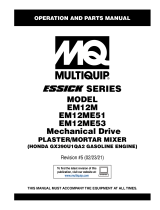 MQ Multiquip EM12M Operating instructions
MQ Multiquip EM12M Operating instructions
-
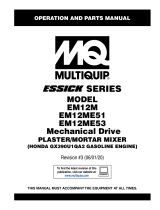 MQ Multiquip EM12M Operating instructions
MQ Multiquip EM12M Operating instructions
-
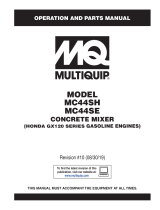 MQ Multiquip MC44S Operating instructions
MQ Multiquip MC44S Operating instructions
-
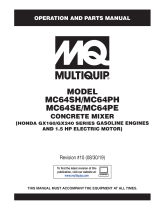 MQ Multiquip MC64SP Operating instructions
MQ Multiquip MC64SP Operating instructions
-
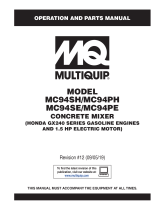 MQ Multiquip MC94SP Operating instructions
MQ Multiquip MC94SP Operating instructions
-
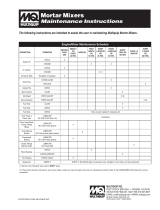 MQ Multiquip Mixer-Mortar Operating instructions
MQ Multiquip Mixer-Mortar Operating instructions
-
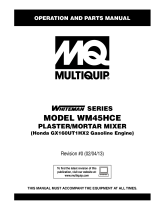 MQ Multiquip WM45HCE User manual
MQ Multiquip WM45HCE User manual
-
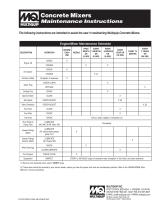 MQ Multiquip Mixer-Concrete Operating instructions
MQ Multiquip Mixer-Concrete Operating instructions
-
MQ Multiquip MS-70 User manual
-
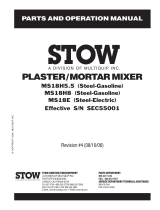 MQ Multiquip MS18 Operating instructions
MQ Multiquip MS18 Operating instructions
Other documents
-
Kamado Joe KJ15041123 Konnected Joe 18 Inch Charcoal Grill and Smoker Installation guide
-
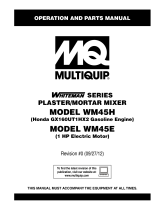 MULTIQUIP Model WM45H User manual
MULTIQUIP Model WM45H User manual
-
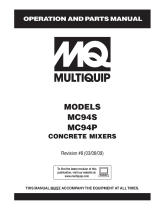 MULTIQUIP Mixer MC94P User manual
MULTIQUIP Mixer MC94P User manual
-
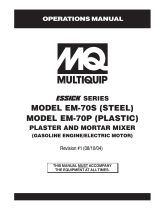 MULTIQUIP EM-70P User manual
MULTIQUIP EM-70P User manual
-
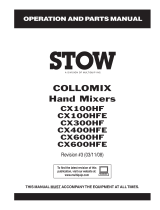 MULTIQUIP CX100HF User manual
MULTIQUIP CX100HF User manual
-
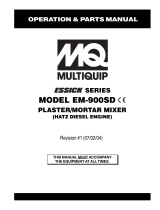 MULTIQUIP EM-900SD User manual
MULTIQUIP EM-900SD User manual
-
Sloan EHD-501 Series Hand Repair & Maintenance Guide
-
Vestil DRUM-55-S Owner's manual
-
Toro Spacer Kit, Concrete or Mortar Mixer Installation guide
-
Premier Mounts PVUM User manual









































































































